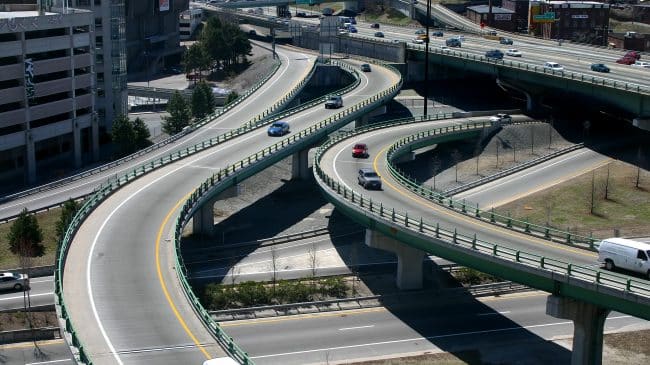Amid the debates – and the looming deadline – over Mayor Michael Bloomberg’s congestion pricing plans for the city, one recent traffic measure has caused little uproar: increased fines ($115) for drivers who block the box. Indeed, many New Yorkers support the mayor’s plan, which means that not just regular police officers, but also the city’s more than 2,800 traffic agents have the authority to hand out tickets for an infraction known as blocking the box. And why not? Few things enrage travelers more than the driver who blocks the intersection, intensifying the already suffocating traffic congestion.
But the truth is that while this plan may satisfy revenge fantasies and increase city coffers, it won’t loosen gridlock’s grip. It may even tighten it.
Blocking the box isn’t a law enforcement issue that Mayor Bloomberg can address by simply having traffic agents mete out punishment. It’s a traffic management issue that represents political neglect of the road network. Drivers aren’t letting their cars sit in the cross hairs of oncoming traffic out of spite. They don’t relish the cursing, honking and fist shaking aimed at them. Like everyone else in the standstill, they’d prefer to be moving. But there’s just nowhere to go.
Much of Manhattan’s congestion stems from vehicles passing through the island on their way to destinations outside or on the outskirts of the borough. These travelers would love to bypass most or all of Manhattan, but the roadway network won’t allow it. Instead it crams motorists together, turning crosstown travelers into box blockers.
So, here’s the question: If straphangers can choose between local and express service, why can’t motorists? In cities all over the world and even in the United States, drivers can choose to drive up and over intersections on humps called queue jumpers, or they can duck under intersections through short tunnels.
Queue jumpers and tunnels could make for a good fit in many spots throughout New York because they operate within existing rights of way. They can also be configured for many different types of roads, from two-lanes on a one-way street (sending one lane over the intersection) to streets with six or more lanes.
Just take a look at how effective the Murray Hill Tunnel is at bypassing traffic. The tunnel, which carries two lanes of car traffic from East 33rd Street to East 41st Street, is a great way to avoid the congestion of Park Avenue. Now imagine more of these tunnels and some well-placed queue jumpers and soon you’re traveling across town, dodging red lights.
Cities like Paris, Sydney, Melbourne, Tokyo and even Tampa, Fla., have upgraded beyond queue jumpers to provide longer under- and aboveground motorways. Granted, much of the metropolitan region is packed with subway and train tunnels and other utilities, but elevated facilities need only airspace, and wide swaths of subterranean space remain uncluttered.
Consider the western edge of Manhattan, where there are no serious underground obstructions from the Battery to the George Washington Bridge. Various east-west streets are also free of subway tunnels. In the book “Street Smart,” one contributor, Peter Samuel, makes a sensible suggestion: construct a truck-only tunnel that would take many lane-cloggers off surface streets. “It would feed a north-south truckway spine along the west side of Manhattan, with short east-west spurs,” he writes.
Gridlock hasn’t grown fiercer because drivers have become ruder and simply no longer care if they block the box. Rather, clogged intersections represent a symptom of congestion’s root cause: political neglect.
For decades, officials have failed to upgrade the road network to keep up with a swelling population. Mayor Bloomberg has said that the city will grow by 900,000 people by 2030; if this neglect continues, it will generate even more gridlock. Over the next 20 years city forecasters expect automobile traffic to grow by 10 percent and freight traffic to increase by 64 percent. But of the mayor’s 16 major transportation recommendations in the city’s long-range plan, not one would significantly increase the road system’s capacity.
Mayor Bloomberg’s ironfisted approach to intersection blockers not only allows an outdated roadway system to grow more antiquated, it may also erode support for congestion pricing. Cities like London and Stockholm have found it easier to sell the public on congestion pricing when road projects are a part of the deal, and New York should follow suit. After all, most of those who would pay the $8 congestion toll – if the plan is approved by Albany in time to meet tomorrow’s federal deadline for a grant of about $500 million for the program – aren’t out-of-towners, they’re the mayor’s own constituents.
As we await news from Albany, many remain suspicious of congestion pricing, and they won’t take kindly to additional measures that cast drivers as scapegoats. Promising to devote some congestion pricing money to building queue jumpers may win over fence-sitting motorists, not to mention bus riders who would enjoy bona fide express service.
